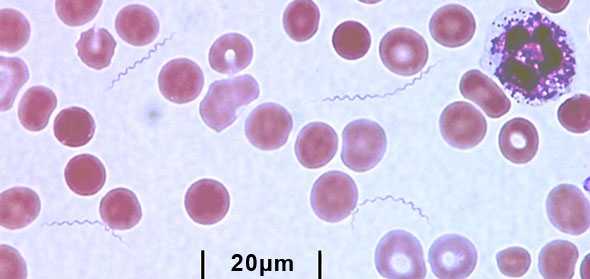Symptoms
Clinical Disease

Peripheral blood smear. The TBRF bacteria are long and spiral-shaped. The circular objects are red blood cells. The irregular purple object in the top right corner is a white blood cell.
Tick-borne relapsing fever (TBRF) is a rare infection linked to sleeping in rustic cabins, particularly cabins in mountainous areas of the western United States. The main symptoms of TBRF are high fever (e.g., 103° F), headache, muscle and joint aches. Symptoms can reoccur, producing a telltale pattern of fever lasting roughly 3 days, followed by 7 days without fever, followed by another 3 days of fever. Without antibiotic treatment, this process can repeat several times.

General timeline for TBRF relapse intervals.
- Page last reviewed: October 15, 2015
- Page last updated: October 30, 2015
- Content source:


 ShareCompartir
ShareCompartir